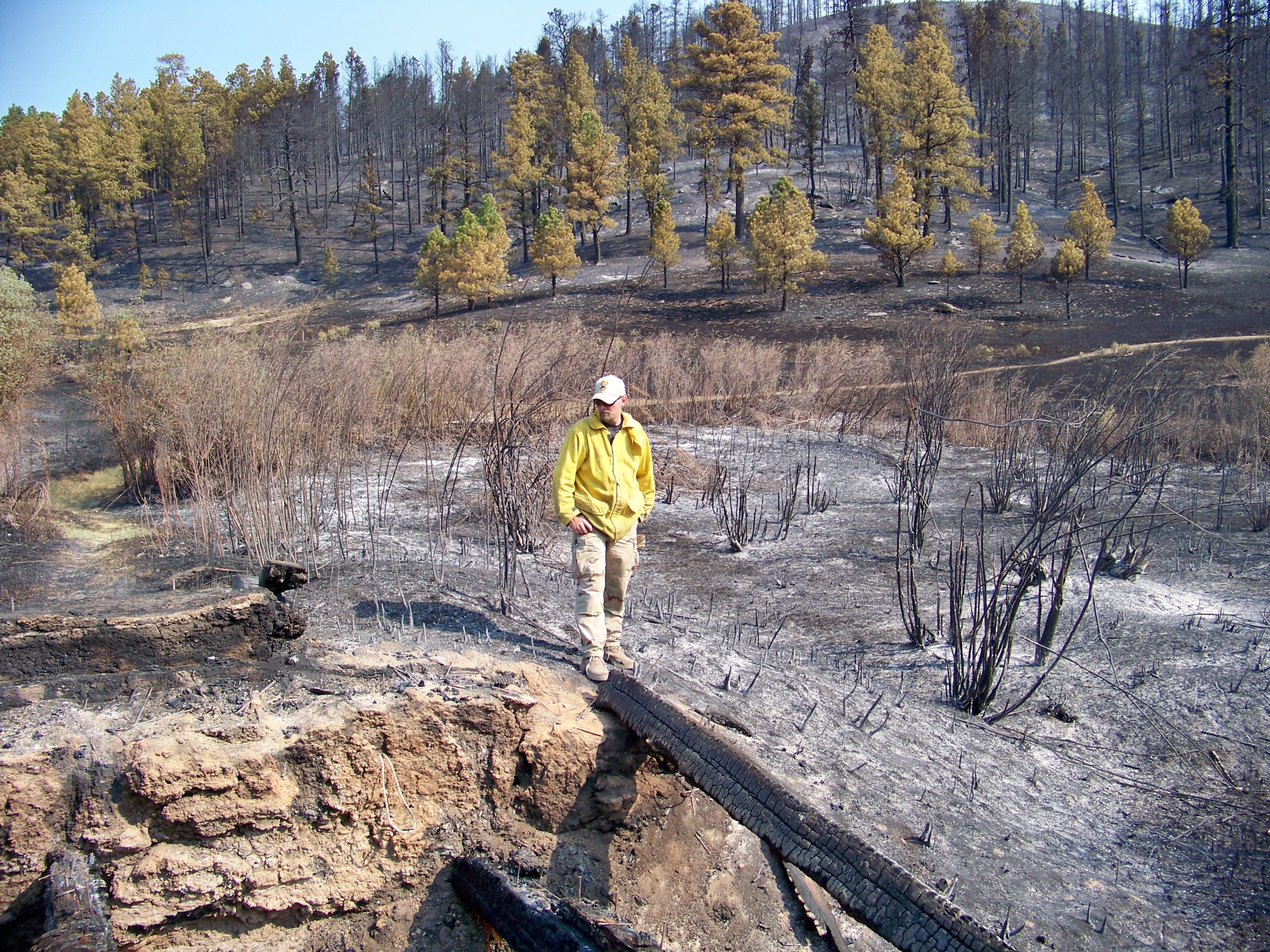Climate Change in New Mexico State Parks
From a 27,000-acre wildfire torching Sugarite (Shuh-gah-reet´) Canyon, to shrunken water levels at Elephant Butte Lake, significant signs of change can be found across New Mexico’s state parks.
Change isn’t new. For thousands of years, the landscape of these places has changed continually, but in the past 150 years the pace of change has rapidly accelerated. Many of our state parks protect a critical resource in our dry
state—water. When water levels are low, there are fewer places for recreation. That means fewer people visit parks, which translates into less revenue. Will parks be able to keep up with rapid environmental change like drought and fire?
To care for these places we love, we turn to scientists to understand what is happening and to look for solutions. Their conclusion: the driving force behind the changes we’re seeing is carbon emissions from human activities.
Hope for the future lies in learning to adapt to these changes, even as we work together to reduce and mitigate the underlying causes. Indeed, the more we mitigate the causes, the less we’ll have to adapt to drastic change, and the more likely our parks will remain viable for future generations.
It’s time for a crucial conversation.
This guide is a conversation about state parks and climate change. We’ll look at ways our state parks are making a difference and explore ways our communities can too. We hope you’ll join this dialogue and help us better
understand how to protect and preserve our state parks.
Science Notes: How do we know that what we’re seeing is human-caused climate change?
Weather refers to short-term, day-to-day conditions. Climate, however, reflects weather
trends over time. Scientists agree that the climate is changing globally. They know
this from thousands of studies worldwide. When we burn fossil fuels like coal, oil, and natural gas, we emit excess carbon dioxide. Rampant CO2 acts like a heat-trapping blanket in the atmosphere, increasing earth’s average temperature and triggering extreme weather.
There is now more CO2 in the atmosphere than there has been for 3 million years, and
the level is rising rapidly. This rapid rise of CO2 coincides with more intense drought
and fire in the Western United States.
Take a Step!
The first step in meaningful climate action is educating
yourself. To learn more about our climate crisis, visit the NASA
climate change website: http://climate.nasa.gov
What the Weatherman Sees
Andy Church forecasts weather for the National Weather Service in New Mexico. As a sixth-generation New Mexican and Albuquerque native, he’s seen winters turn milder, and summers go drier because of weaker monsoons. “I see the changes of human-caused climate change in the health of our forests,” with pockets of dead trees and beetle kill at higher elevations. “I’ve also seen an increase in…large wildland fires” and longer fire seasons amid higher temperatures. “It’s concerning to me to think the areas (and) forests I grew up visiting all over the state are changing, and my kids won’t have the same experiences I did with regard to the outdoors.”

Water: In the Eye of the Beholder What does climate change mean for New Mexico’s water?
What do you see when you look at this image?
A photographer may think, Great shot!, but an out-of-state boater sees the pale bars on Elephant Butte exposed by low water and wonders, Will the boat ramp be open when I get there? A farmer growing chiles or pecans in southern New Mexico frets about the lake’s dwindling irrigation water needed for crops. A resident of El Paso, Texas, wonders if there’ll be water left over for that city. Many reservoirs within New Mexico State Parks—like Elephant Butte Lake—provide water for agricultural irrigation, recreation, and drinking water for thirsty towns. In the last 20 years, Elephant Butte Lake has averaged about 445,000 acre-feet of water, or about 20 percent full. However, in September 2018, Elephant Butte Lake dropped to 58,240 acre-feet of water—just under 3 percent. Although the lake rose to 25 percent by spring 2020, the lake level depends on the snowpack feeding the Rio Grande, the irrigation needs of downstream farmers, and the strength of the monsoon season. Computer climate models predict warmer and drier conditions for our region. What will that mean for those depending on this lake?
Juggling Competing Interests
The U.S. Bureau of Reclamation owns Elephant Butte Reservoir. Irrigation districts funded dam construction in 1916, and pay to operate and maintain the dam. As such, irrigation takes priority. Recreation—managed by state parks—is secondary. However, when lake levels are extremely low, parks like the Butte get fewer visitors. That means less revenue to run state parks.
Science Notes: Climate Change as Health Crisis
The COVID-19 pandemic created a fast-moving health crisis that has impacted humans worldwide. Scientists say human-caused climate change is also a global health crisis. In our dry state, water is life. We need it to drink, and to grow food. Increasing drought
threatens water sources, while rising temperatures mean more heat-related deaths.
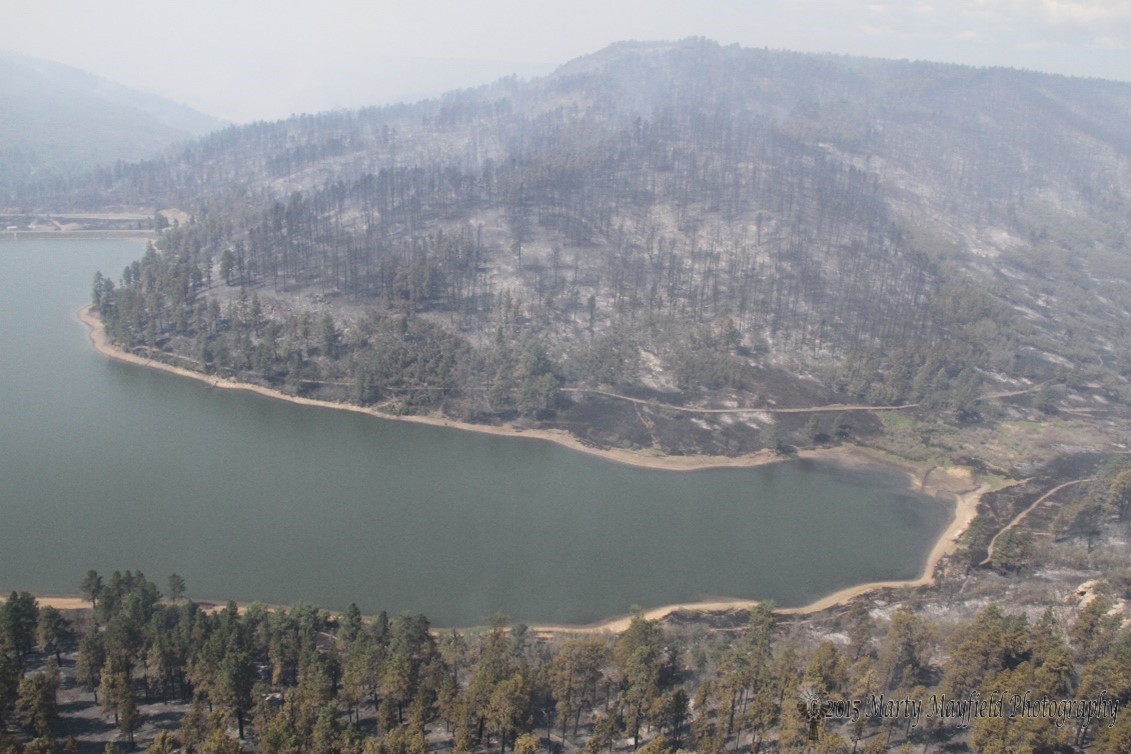
Fire: Nature’s Housekeeper - Are natural fire cycles changing?
The human-caused Track Fire of 2011 burned about 80 percent of Sugarite Canyon State Park in northeastern New Mexico. Post-fire erosion threatened to pollute the park’s Lake Maloya, the primary drinking water source for the City of aton. Emergency anti-erosion measures taken by the City of Raton and state parks protected the water. While fires can be scary, fire historically played a key role in forest and plains ecosystems. Ponderosa pine forests evolved with low-intensity surface fires sparked by lightning and indigenous peoples. Those fires gave surviving trees more access to sunlight and water. Fire also cleared whole stands of mixed-conifer trees, making space for aspen regrowth. On the eastern plains, fire fertilized grass for grazers like pronghorn. However, decades of a misguided policy of putting out all fires created over-crowded forests. Such forests are more prone to burn amid a changing climate with hotter temperatures and less rain. The result is longer fire seasons and more intense fires
Science Notes: What a Mouse Can Tell Us
When scientist Jennifer Frey of New Mexico State University went looking for a native mouse, it was tough. The N.M. meadow jumping mouse had been eliminated from much of its historic range. Why does that matter to us? Well, the mouse needs high-quality streamside habitat—the same habitat that protects good drinking water for people.
Frey said “climate change is a contributor to the various threats that remove that habitat,” like drought and fire. She did find the mouse in protected places, including three state parks: Fenton Lake, Coyote Creek, and Sugarite Canyon. Unfortunately, the 2011 Track Fire at Sugarite reduced that population of the mouse, a species now federally listed as endangered. Frey said the three state parks, now designated critical habitat, “are crucial to long-term persistence and recovery of the species.”
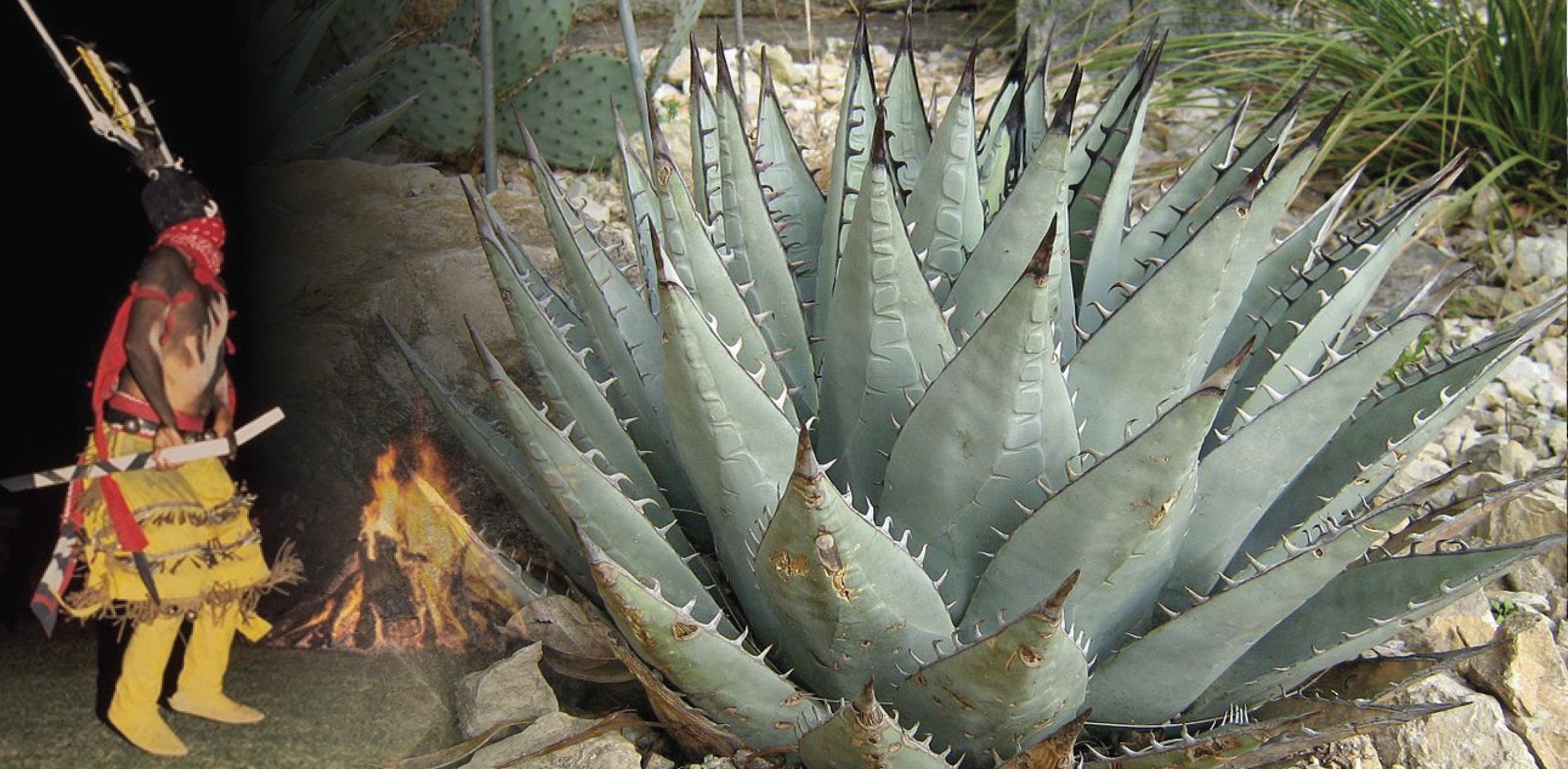
Nature’s Grocery & Pharmacy
Indigenous people have age-old ties to this landscape Our state parks protect many native animals and plants, which for thousands of years sustained indigenous people in our area. However, higher temperatures
and shifting patterns of fire, rain and snow are affecting when and where plants and animals are found. For example, N.M. State Park Ranger Alex Mares says the Mescalero Apache people now must go to higher elevations to find traditional food such as the mescal agave.
For generations, Mescalero Apache girls have harvested the agave for roasting and eating during coming-of-age ceremonies. Living Desert Zoo and Gardens State Park in Carlsbad partnered for many years with the Mescalero Apache for a traditional mescal roast.
Car Wash Medicine?
Alex Mares, N.M. State Park ranger and interpreter, often shares stories from his
Diné (Navajo) heritage. He cites literature* revealing that Diné medicine men
now search wetter areas by car wash buildings and along road ditches to find
once-common medicinal plants. These plants are now harder to find amid drier
conditions. “As Diné, everything we do traditionally to heal, protect and restore
balance, involves and requires the plant people,” Mares said. “If the plant people
are reduced in numbers, caused to move, or altogether disappear, the same
may befall us.” Mares said in his 30-year park ranger career, he has worked to
protect and restore sacred sites and natural resources. “This aligns perfectly
with our traditional values of Diné—especially, to strive to maintain beauty and
restore balance and harmony.” *Between Sacred Mountains: Navajo Stories and
Lessons from the Land. By Sam Bingham, editor, and Janet Bingham, editor
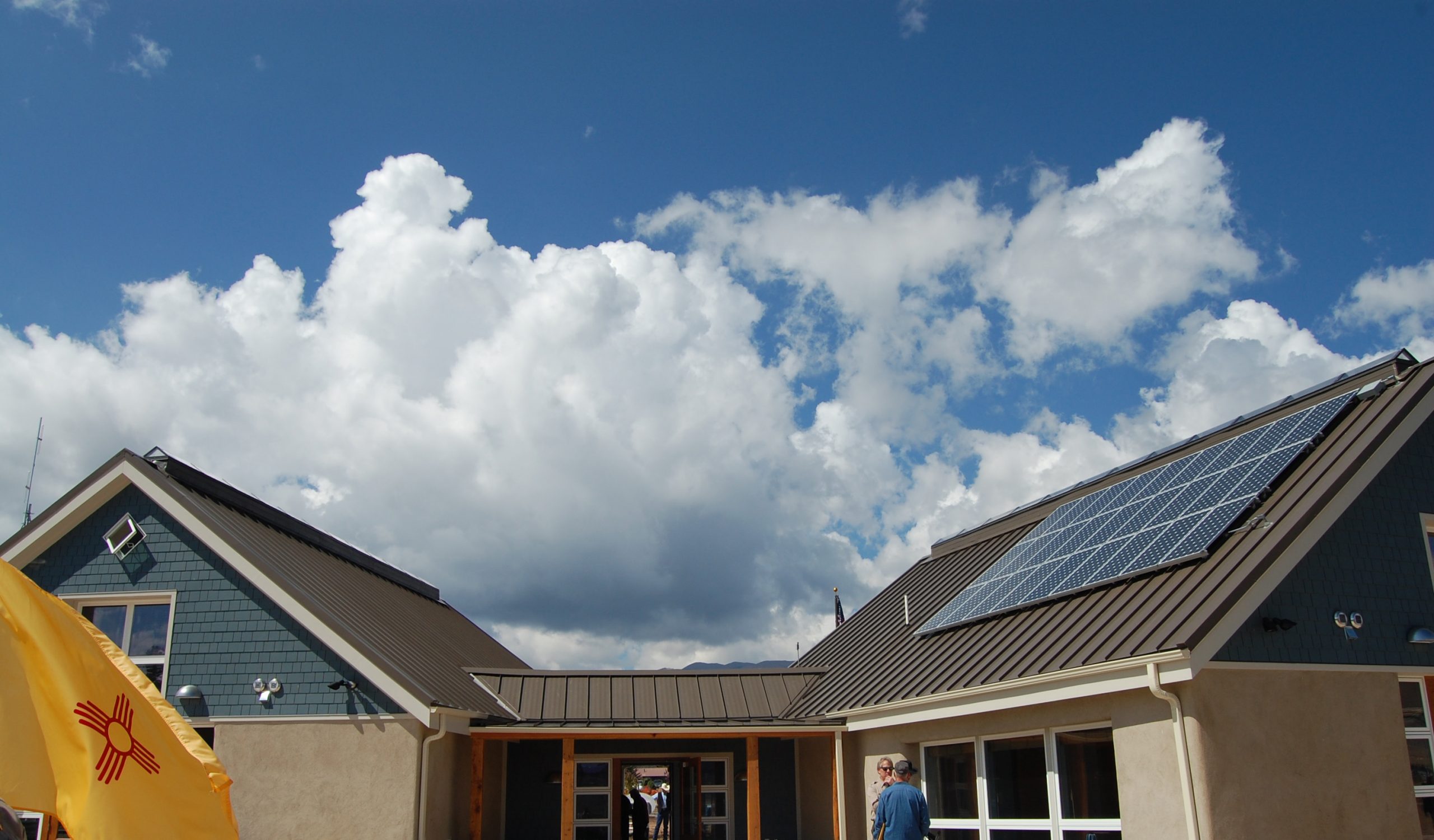
The Future is Now New Mexico State Parks sets an example by...
Mitigating:
The visitor center at Eagle Nest Lake State Park is a green building with solar panels and straw bale walls. At least 13 other parks* offset energy costs with solar panels. The park fleet includes some hybrid vehicles, and state parks have begun installing charging stations for electric vehicles. In a major move, N.M. State Parks is developing a self-sufficient solar microgrid system to power all of Hyde Memorial State Park.
Adapting
Sugarite Canyon State Park Superintendent Robert McIvor lived through the 2011 Track Fire. So amid ultra-dry conditions in December 2017, he had volunteer
firefighters stand by at the park’s annual luminaria event. With 1,500 lit candles inside paper bags along trails, “I was a nervous wreck,” McIvor said. Although candles had been used since the event began in 1991, the park switched to battery-operated lights in 2018. McIvor said “due to the current warming trends,” he won’t return to
candles. “The risk to public safety and the park is just too great.”
N.M. State Parks has lengthened boat ramps to adapt to lower lake levels. Chris Bolen, manager of the marine enforcement program at Elephant Butte, says the ramps
there “were extended as much as possible to provide lake users with access … at all water levels.” He adds many parks have multiple ramps to follow fluctuating lake levels. “In my 20
years with parks, I have seen a trend to lower lake levels, but (I) am also amazed at how one wet winter or summer monsoon can fill a reservoir in a matter of weeks.”
Building Knowledge:
School field trips on fire ecology and watersheds help our youngest citizens understand
the world and prepare them for future decision-making. Below, Interpretive Ranger Pat Walsh sets fire to a matchstick “forest.” Another program for sixth graders focuses on emergency preparedness and climate resilience.
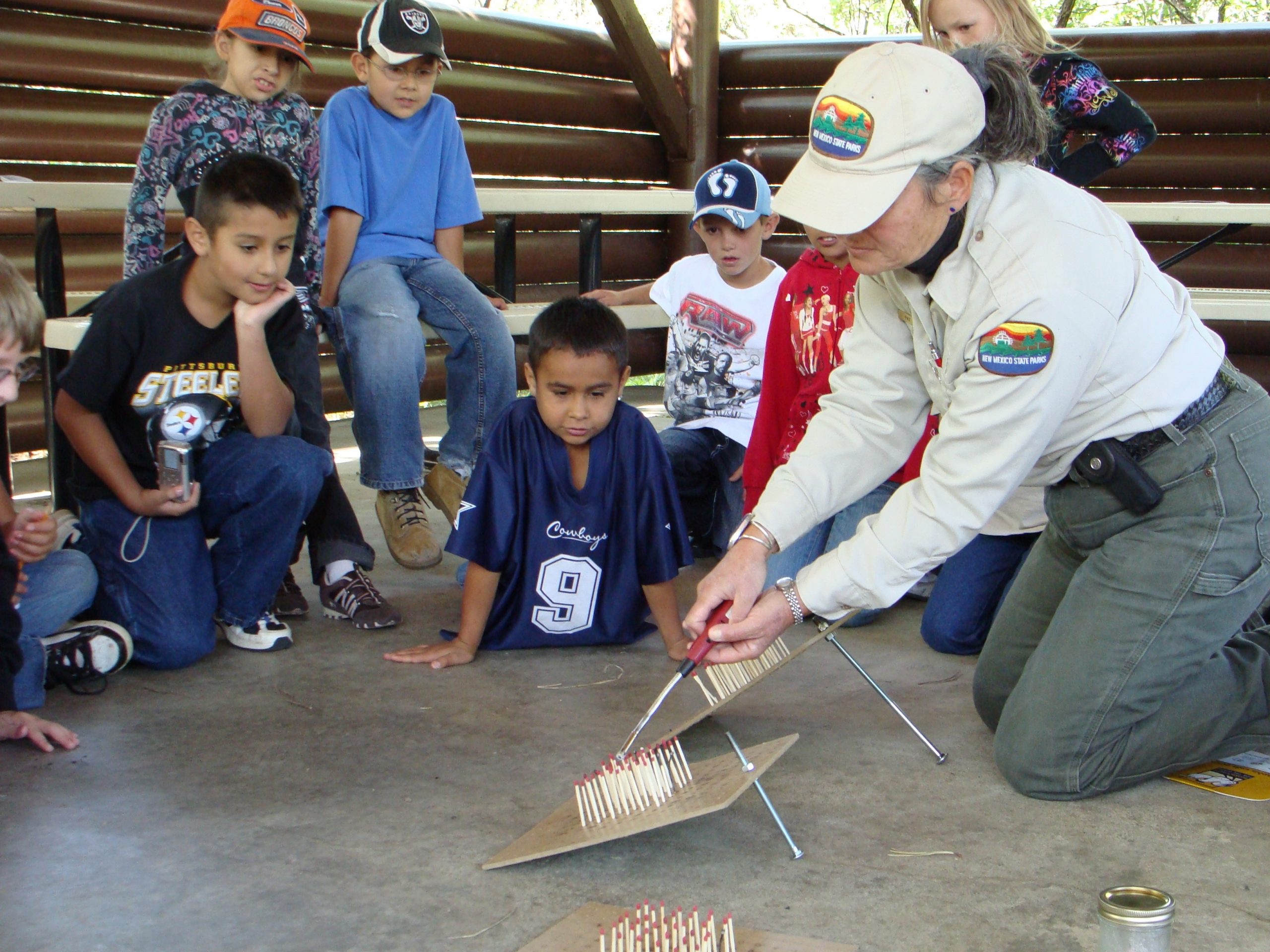
A Shared Journey What will N.M. State Parks be like for our grandchildren?
We’re in the early part of a long journey. We’re learning to adapt to Earth’s changing climate, even as we work together to mitigate and slow that change. This journey will unfold over decades, and will likely result in a significantly different way of life for most of us, regardless of where we live. In fact, the more we mitigate now, the less we’ll have to adapt later.
New Mexico State Parks are precious places for appreciating, understanding and protecting a continually changing environment.
What can you do to mitigate climate change and foster resilient communities? Here are some ideas:
Talk About It—But Listen First!
Start by listening to friends and family from a place of shared values, such as the desire for a bright future for our children, a safe home, food, clean water and air, and good jobs. Then connect these values to the climate change impacts you’ve seen in New Mexico. Share from the heart why these things concern you. We can help galvanize action when we respectfully discuss the issue and share our feelings.
Your Voice is Important
Elected officials, business owners and members of other organizations make choices that affect us all. Your voice is needed. Let your leaders know what you think. Vote!
Cultivate Active Hope
We’ve solved tough problems in the past. For example, the hole in the earth’s ozone layer is healing because countries around the world agreed to reduce use of certain chemicals. Even amid uncertainty, we can cultivate “active hope” by working together on meaningful solutions, especially at the community level. Examples range from local community gardens, to Albuquerque’s bicycle sharing program, to community solar farm projects around the state. As an individual, you can consider getting a hybrid or electric car, and explore incentives for installing solar on your home.
“I believe that our world is worth fighting for,” wrote Raton sixth-grader
Mariah Gonzales. “We live, we breathe, and every day we can choose to make our
earth a better and safer place.”

